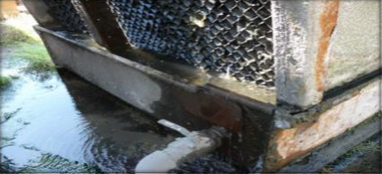Local: (510) 552-0426

LD is a respiratory infection that strikes susceptible individuals. Infection results from inhaling airborne water droplets or mist contain viable Legionella pneumophila. They are small enough to pass deep in to the lungs.
A cooling tower system can present an ideal environment for growth of Legionella pneumophila. Drift from cooling towers in the form of aerosols can be easily inhaled. Legionella pneumophila bacteria are widespread in natural water sources. They are found in rivers, lakes, and streams; mud and soil samples; water and sludge from cooling towers; and in other man-made water systems.
Where does Legionella grow in your cooling tower?
The ecology of Legionella pneumophila in water systems is not fully understood; however, the following conditions have been found to affect its growth rate:
The formation of a biofilm in the water system is thought to play an important role in which the Legionella bacteria can grow. 1 Legionella pneumophila grows within biofilms and is shielded from concentrations of biocides that would otherwise kill or inhibit them when freely suspended in water.
The bacteria begins to grow in the range of 68 degrees F to113 degrees F. Organisms may, however, remain viable and dormant in cool water, multiplying only when the temperature reaches a suitable level and when growth and reproduction are not inhibited by adequate bio-control.
It’s obvious that the best weapon we have to prevent LD is a sound cooling tower cleaning program. We must remove sediment, sludge, scale and organic material before a biofilm develops. An industry engineer said “Clean basins and sumps as needed and the entire cooling tower twice a year”.2
Monitoring Legionella in Cooling Water Systems:
Various studies have shown that some 40% to 60% of cooling towers tested contained Legionella. Therefore, it is best to assume that your cooling tower can harbor the organism. Evaluate the system cleanliness and effectiveness of microbial control by visual inspection by regularly monitoring of reservoir and surfaces.